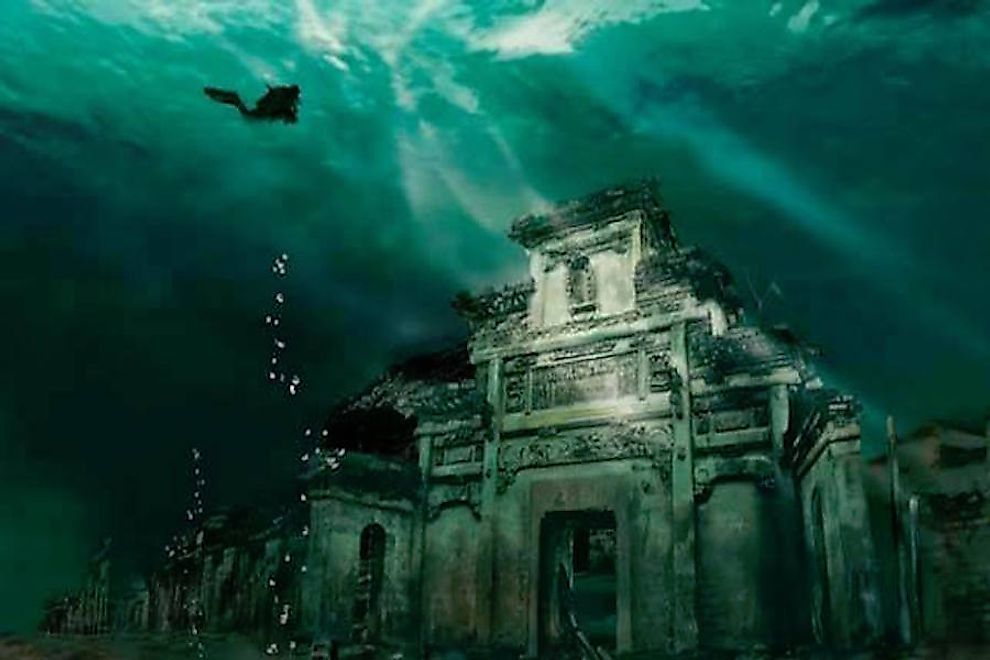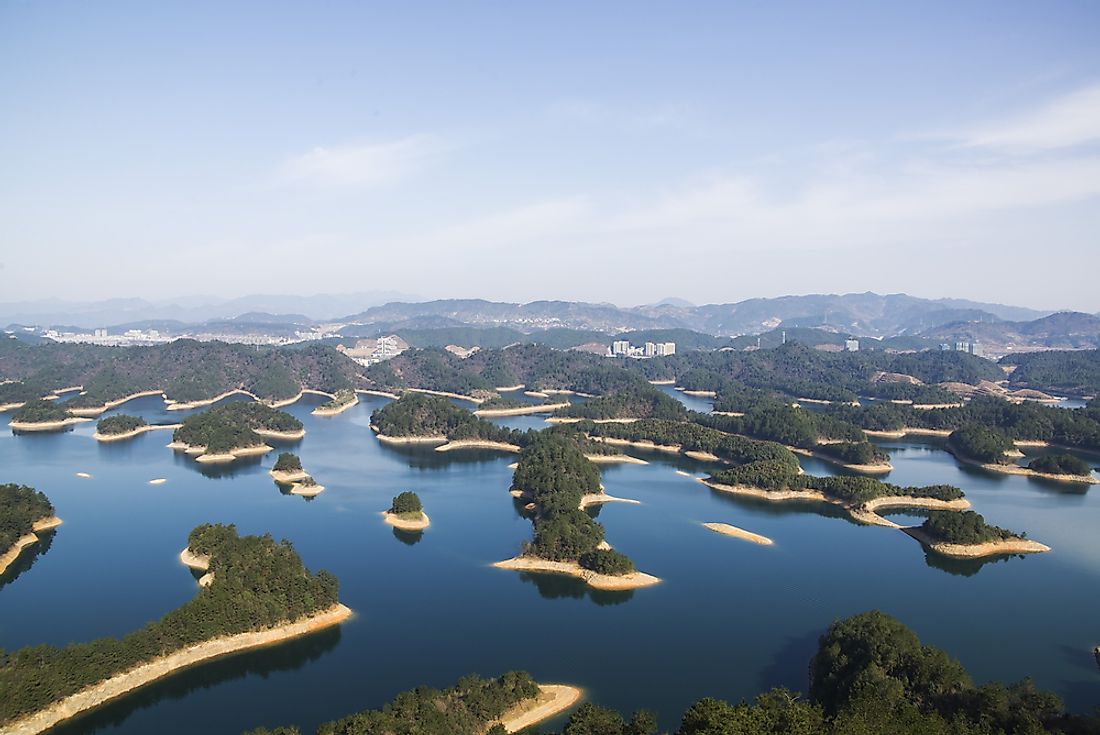The Drowned City of Shicheng - Unique Places Around the World

5. Description
Also called the Lion City because of the Five Lion Mountain (Wun Shi in Mandarin) behind it, the city of Shicheng was founded approximately 1300 years ago during the Tang Dynasty (25-200 AD) in today’s Zhejiang Province, 400 km south of Shanghai. It was a political and economic hub of the Ming and Qing dynasties. In 1959, the city was deliberately flooded to make way for a hydro-electric project and the Xin’an dam. More than 300,000 residents, who had lived there for generations, were evacuated to create the artificial Qiandao Lake.
The man-made lake covers an area of 573 square km (221 square miles) and is dotted with thousands of islands big and small. Forests cover more than 80% of the surface area. The city itself has been remarkably well-preserved 85 to 131 feet under the lake, depending on one’s location. The ancient stone buildings with their Chinese inscriptions stand intact along the main avenues and streets just like it did almost sixty years ago. Even the wooden beams and staircases are intact. The water actually protects the various components of the city from the sun, wind and rain.
4. Uniqueness

Qiandao Lake looks peaceful and serene on the surface, just like any other lake. Imagine the amazement of a person who, unaware of the history, stands on its banks looking out towards the distant islands, and finds that a whole city lies submerged below. Shicheng holds the distinction of being the only functional city in the world that was deliberately deluged for a modern engineering project. Explorations and picture have revealed the true splendor of the city. It is rightly called a time capsule, which provides titillating glimpses of Imperial China, its architecture, culture and the life of its ordinary citizens. It also reveals how ancient Chinese cities were planned, constructed and embellished.
Underwater photographs show that the city had five entrance gates, each with its own tower. This was one more than the traditional four gates in the cardinal directions. For some reason Shicheng had two gates facing west. The wide avenues and boulevards of the submerged metropolis are dotted with 265 archways. These architectural features are decorated with stone heads of lions, dragons, phoenixes, dragons apart from cultural inscriptions, dating back to the 16th century. Shicheng had six main streets made of stone, and many side streets, which connected every corner of the city. A continuous outer wall protected the city in olden days.
3. Tourism
The lake, its islands and forest cover made Zhejiang a popular tourist destination long before Shicheng was rediscovered. In 2001, the Chinese government decided to explore the remains of the lost metropolis. But the underwater city caught the popular imagination when the Chinese National Geographic covered the story. It published some scintillating underwater photographs of the city’s stone buildings and their wooden staircases complete with dragon heads and other Chinese icons. It produced illustrations depicting what Shicheng may have looked like hundreds of years before.
It caught the attention of scuba divers who further explored the city’s vastness and produced never before seen photographs of what they call the Atlantis of the East. Today, dive operators like Big Blue and Zi Ao Diving Club conduct regular dives each year between April and November. The present administration is now mapping the submerged city and the dive operations are considered "exploratory" in nature. Only divers with deep water, night diving and buoyancy experience are allowed to explore the city at present. However, what was once a lost city has been re-discovered. Shicheng is being actively promoted a tourist destination for scuba divers.
2. Habitat
The region surrounding Shicheng was a mountainous one - when the Xin’an reservoir filled, the hilltops formed thousand of islands packed densely together. Though man-made, Lake Qiandao is a pure lake because it gets oxygen from the thick forest canopy on the islands. It has pristine waters that are drinkable. Many of the islands have their own tourist attractions such as "heaven pool", "admiration mountain", "honey mountain" and an abandoned quarry site dating back to the Southern Song Dynasty (1127-1279).
A thorough study showed that the area has 1,830 species of plants including 800 woody plants. The lakeside is also home to 498 species of wild flowers and 18 species of protected plants. The forests of the lake provide an ideal habitat for various wild animals native to the region. People can see peacocks, snakes, monkeys and even ostriches. The lake abounds with fish and is surrounded by fruit trees. Tea and mulberry (the silkworm’s food) is also grown around the lake. Visitors can also go grass-skiing and take boat rides.
1. Threats
Shicheng lay blissfully underwater for more than 50 years, its architecture, including the wooden structures and its streets protected from both human and natural elements. Now, it has been found and is being subjected to human activity. With best intentions and in the name of progress, Shicheng is being promoted as an underwater museum, but authorities need to preserve the city at the same time. Some experts suggested pumping water out of the city and building another protective wall, but it was deemed costly and the waters would not be able sustain the water pressure outside. In fact, two loose wooden beams, after being removed and exposed to air, began to shrink, proving that water preserves the wood better.
A 23.6 meters high, 3.8 meters tall submarine was constructed at a cost of US$ 6.36 million, with a seating capacity of 48 for underwater sightseeing. However, it was later known that local laws did not permit submarines to operate in inland waters and there are no rules to regulate civil submarines. Even if it had been approved, the strong water flows from the underwater vehicle may damage the buildings. A railway development project for the area was abandoned as it was considered harmful for the overall ecology and the natural sights of Qiandao Lake.







